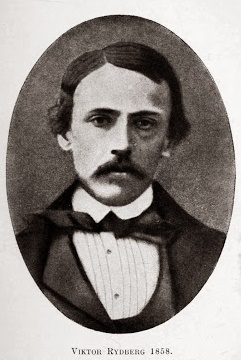| |
|
|
|
In recent decades, it is often stated that Viktor Rydberg was a
homosexual with an erotic interest in young boys. No direct evidence,
however, supports this sensational
claim. At its heart, the argument is literary, based on
selective readings of Rydberg's published works and personal
letters, interpreted through a modern lens. The core source material
consists of seven
handwritten copies of personal letters which Rydberg wrote to
his former student Rudolf Ström (born 1842) between 1856–1862, now found in the
collection of the Royal Library in Stockholm. The transcripts,
made by Rydberg's wife Susen, include, among other things,
expressions of affection toward the teenage Rudolf Ström. That
they are copies of the originals has aroused suspicions that
they were edited by Mrs. Rydberg, or worse censored. One of the
reasons for the speculation is that the envelope in which the
letters are filed states:
|
|
"The originals of these letters
have been searched for many times by the staff of the Royal
Library at the request of the librarian S. Hallberg in
Gothenburg. They were probably intentionally destroyed
by the Ström family."
|
|
|
|
|
The theory that Viktor Rydberg was homosexual with an interest
in young boys originated with Victor Svanberg, a self-professed
gay literary critic who based his claim solely on passages from
Rydberg's published works and personal letters, none of which
actually attest to Rydberg being gay. No new sources have been
cited since 1928 when Victor Svanberg, then an associate
professor at Uppsala University, first made the argument,
more than three decades after Rydberg's death in 1895. Thus,
these copies of Rydberg's letters are the sole source
behind the claim. The most compelling argument for Rydberg's
alleged same-sex orientation remains Svanberg's premise
assuming purposeful omissions in the letters and the willful
destruction of the originals. When Svanberg presented the
hand-copied letters as evidence in his book Novantiken i Den
siste atenaren ["Greek Antiquity in The Last Athenian"], he
emphasized their supposed censorship, noting: "The letters
were only been accessible to me in copies," adding that "In the
copying, certain omissions have been made and indicated.” Thus,
the argument is one of omission and innuendo. It isn't what the
letters say, but what has allegedly been left out that is
necessary to draw this conclusion.
With his seemingly secure statements about censorship of the
copies, Svanberg succeeded in raising suspicions that there was
something sensitive in the original letters which the Rydberg
and Ström families wished to conceal. Over seventy years later,
Greger Eman, writing for the gay publication Lambda Nordica, returned to the allegedly censored letters at the
Royal Library. Without evidence to substaniate his claim, Eman
states that large parts of the collection were burned. The
letters that remain are, he continues, "censored copies
from
Susan's hand". Eman's confident conviction that the originals were burnt
and that the copies are censored is crucial to his conclusion
that both Rydberg's and Ström's relatives tried to conceal that
Rydberg had a homosexual orientation.
|
Eman, Greger.
Gossen Snövit: Passioner och
förpliktelser hos Viktor Rydberg. Lambda
Nordica, 5:2-3, (1999), pp. 6-41. [This is a pdf download]
|
THE DISCOVERY of NEW EVIDENCE
|
The original letters have since been found in the Norwegian
Library of Letter Collections in Linköping. As detailed in
her 2018 book Dialog eller dynamit: Viktor Rydberg och
August Strindberg-förtryckets fiender, Professor Emeritus
Birthe Sjöberg of the University of Lund, following a tip from city archivist Åke
Carlsson, succeeded in locating all originals to the copied
letters in May 2017. The originals were not "deliberately
destroyed". Instead, they have been preserved with care,
as Rudolf Ström attests in a letter to Rydberg, dated October 26,
1892, how his "warm children's soul was attached" to Rydberg,
"the first real friend I acquired". He continues:
"Your subsequent affectionate letters to me bear the most
beautiful testimony thereof, letters which are now preserved
with envious tenderness by my dear, little wife." [Dina
sednare, kärleksfulla bref till mig bära därom det skönaste
vittnesbörd, bref, som numera med afundsjuk ömhet bevaras af min
kära, lilla hustru. ]
|
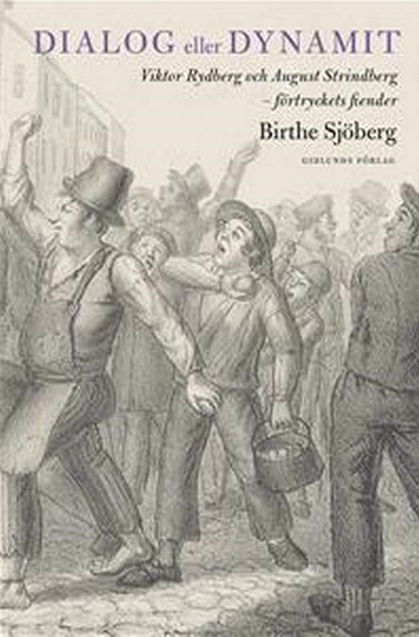
|
Rudolf Ström (born 1842) died in 1913, and in 1937, Abela Hallin, the aunt
of Rudolf Ström's wife Abela Wallenberg, donated the
well-preserved letters to Stiftsbiblioteket in Linköping.
The envelopes are postmarked "Gothenburg" plus the date, but the
stamps have been cut off. There are remnants of sealing wax on
the back. They are addressed to "The student Mr. Rudolf
Ström, Linköping, Bleckenstad". For a time, Rydberg added the
name Gustaf and wrote: "The student Mr. Gustaf Rudolf Ström,
Linköping, Bleckenstad". When Rudolf moved to Stockholm, the
letters were addressed to "Student at the Institute of
Technology, Mr. Rudolf Ström, Stockholm".
Having compared the originals with the transcripts found in the
Royal Library, Professor Sjöberg found every word
reproduced correctly. Thus, when he writes that "certain omissions
have been made and indicated" in the transcriptions, Svanberg is
incorrect. Some of the markings he refers to are also found in
the original, for example, in the oldest letter, Rydberg marked
one pause with four dashes in a row (see picture); other marks
are not found in the originals or in the transcriptions. Thus
claims about censorship of the letters in the Royal Library are
baseless. Susen Rydberg did not omit anything in the letters
she copied.
Source: Sjöberg, Birthe. Dialog
eller Dynamit? (2018), pp. 29-35.
|
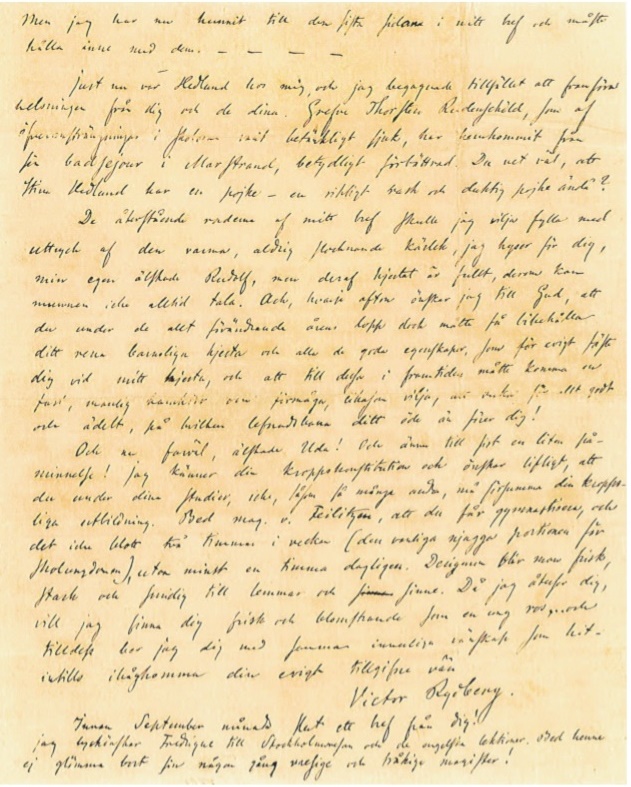
Rydberg's Letter to Rudolf Ström,
dated September 2nd, 1856 as published in
Birthe Sjöberg's Dialog eller
Dynamit: Viktor Rydberg och August Strindberg
(2018).
|
|
Similar speculations have been made
about Rydberg's marriage to Susen Hasselblad. According to
Professor Sjöberg, the only 'safe' source on this subject is a
conversation that literature historian Olle Holmberg had with an
anonymous friend (dubbed "Mrs. L.") of Susen Rydberg in 1933,
over fifty years after the couple married. Interviewed just five
years after Svanberg published his theory about Rydberg's
supposed gossekärleken ('love for boys') which shocked
their contemporaries, "Mrs. L" story may have been influenced by
it. According to Holmberg, she said: “Viktor Rydberg lived
in asceticism for the first part of their marriage. His wife did
not understand this, and thought that it was somehow related to
his poetry. When he later wished to approach her, she was tired
of waiting and did not want to." Holmberg conducted the
interview when he was writing Viktor Rydberg's Lyric (1935), but
chose not to include it in the book. It was not until 1948 that
he included the interview together with other remaining material
in a Swedish literary journal. As for the veracity of the tale,
Holmberg's own words must be quoted:
"The obvious reservation
that should accompany all stories of this kind, that human
memory is fragile and that oral tradition has never been 100
percent reliable, need not be emphasized.”
The same interview got a bigger
audience twenty-five years later when Hans O. Granlid included it
in his oft-quoted anthology Vår Dröm är Frihet
[Our Dream is Freedom, 1973]. But Granlid too added a warning: "It should be read with
a criticial eye." As Professor Sjöberg observes, Holmberg and
Granlid likely would have been more critical of Mrs. L's story
if they had known Svanberg's theory lacked foundation. But
neither Svanberg, Holmberg nor Granlid knew of the existence of
the original letters. Nor were these three researchers unique in
that respect. Not one of Professor Sjöberg's forerunners in
Rydberg research knew about the original letters, and this is
probably why Svanberg's conclusions have been accepted by an
ever growing group of researchers. From their statements, it is apparent that the alleged 'love for
boys', as well as the alleged censorship and destruction of the
original letters underlies the speculation about Rydberg's
marriage.
Source: Sjöberg, Birthe. Dialog
eller Dynamit? (2018), pp. 29-35.
|
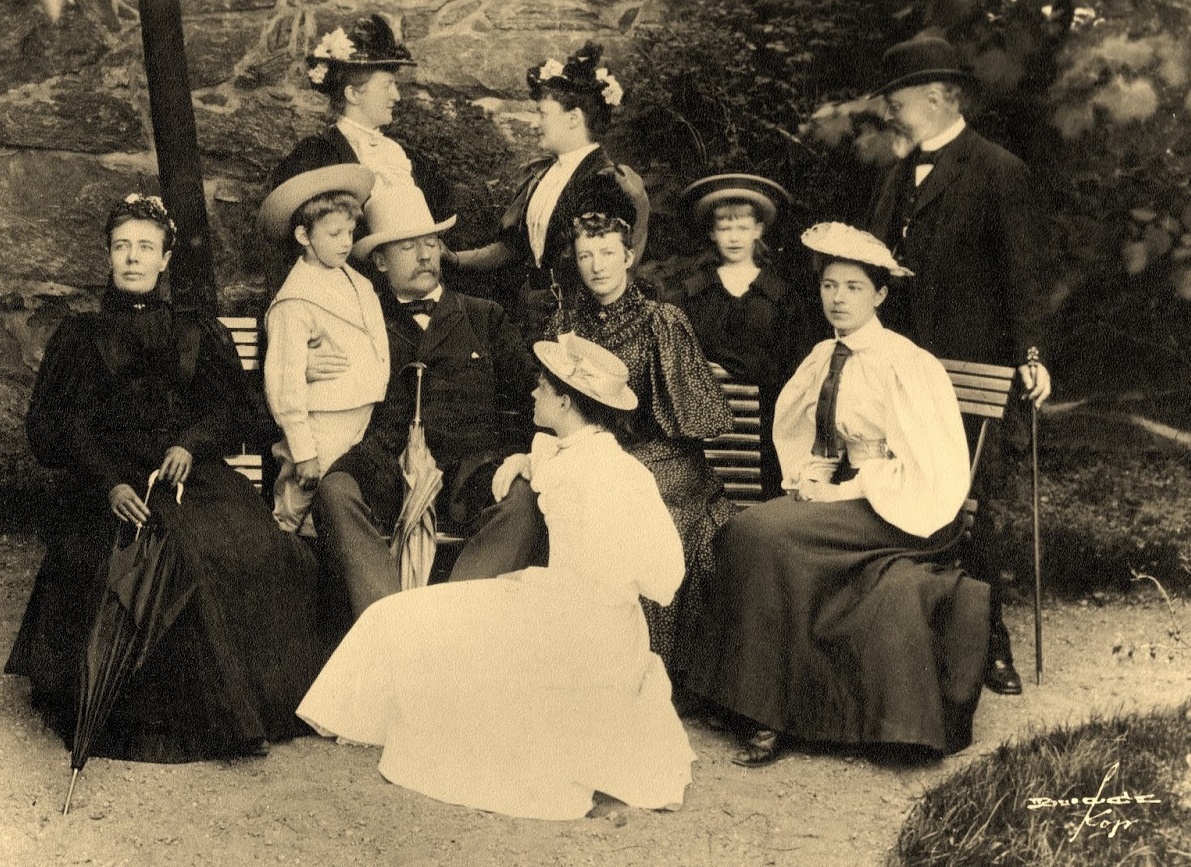
Viktor Rydberg (center) with the
Hasselblad Family
at their summer home in Bångsbo, Släp parish, near Särö.
|
In a tribute to "Susen
Emilia Rydberg" (born 1849) published in the journal
Idun on October 4th, 1895 shortly after her husband's death,
author Nils Linder recounts a personal story about Viktor
Rydberg:
|
"So strong was Rydberg's love for his mother - which
he already lost when not yet fully six years old - so deeply
devoted was he to the memory of her, that on many occasions,
especially at the tender moments of his life he seemed to
see her in living form. From a scientific point of view,
such visions are nothing surprising or inexplicable.
Credible stories about such things are abundant, and Rydberg
was just one of the many great and reputable personalities,
who believed they received revelations in this way.
From 1876 to '78, Rydberg gave public lectures in
Gothenburg. For these he always prepared with utmost care,
i.e. through writing down every word he would say and
through carefully reading his concept. Thus, the audience
did not have to fear any involuntary omissions by the
lecturer or any stuttering attempt to recover a lost thread
in the presentation. But once - probably in the Spring of
1878 - the audience of these lectures was surprised to see
the man in the chair come undone for a few moments. The
cause of this incident was never known to the larger public,
but individual friends heard Rydberg's own explanation of
what had happened:
Once, when he looked out into the lecture hall, he saw a
vision that made him forget everything else in the world:
before his eyes he saw his mother, alive. She stood beside a
young woman present in the hall, whom Rydberg had met a few
times with the family where he spent most of his time in
Gothenburg and was treated as a member. If my memory does
not fail, Rydberg, when he talked to me about this vision,
added that the figure had, by some special means,
brought attention to the young woman, who not long
afterwards became his betrothed and later his wife.
In my collection of Rydbergiana I have found a newspaper
clipping dated the 16th of May 1878. Under the rubric
"Viktor Rydberg on Visions" it is said that a couple of
weeks prior, he had halted during a series of public
lectures he held in Gothenburg - which discuss, among other
things, sensory phenomena — with an explanation of
'visions', most often manifested in the visual field of the
mind, but which also can effect other senses— that
they are due to 'a process within the soul itself, in which
a memory emerges or an image is reproduced with such
extraordinary strength that it acts on the senses in the
same way a real object would.'"
|
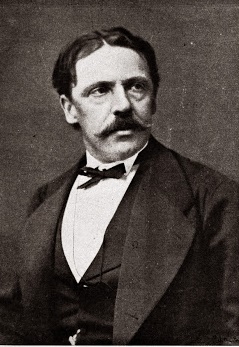
Abraham Viktor Rydberg,
1876
48 years old
|
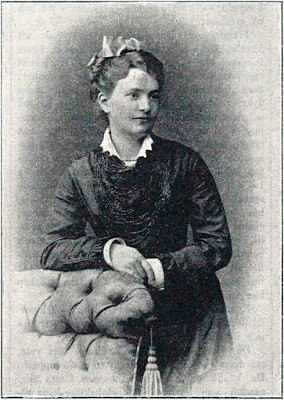
Susen Emilia Hasselblad, 1878
29 years old
|
|
One day at the end of August 1878 Susen Emilia Hasselblad and
Viktor Rydberg, already then widely celebrated as an author,
plighted their troth to one another at Bångsbo, not far from
Särö, in Halland. A few weeks later the engagement was
announced, in the customary manner, for kinsmen and friends. The
wedding was celebrated on March 14, 1879 in Gothenburg, at the
home of the bride's parents. This day commenced a period of
marital bliss for both spouses. The union was made in mutual
love, high regard and trust. But nevertheless, Viktor Rydberg's
wife had a difficult and responsible role to fill. At that
time Rydberg celebrated his wedding, his health was far
from satisfactory. Among her first duties as wife, Susen
considered the role of nurse to be the highest. Immersed in his
research and writing, the noble scientist and poet was generally
uninterested in external affairs. His wife took care of
the cardinal issues of life, remaining constantly and
incessantly vigilant in her duties. She kept his promises and
connections, remembering them and making sure they were
completed. That she had a heart for service to others is
clear. In her own words to an admired friend, Julia von Vollmar,
dated October 24, 1887, Susen says:
"If I were not where I am — if Viktor did not need me, no
matter how insignificant I am, I would, of all things in the
world, want to be your maidservant."
*
Rydberg often spoke with pride and heartfelt
satisfaction about his excellent "secretary" and "librarian".
For more than 16 years, Susen contributed, infinitely more than
anyone else, to the artist's learning and thought-life, by
preparing a home and a home life, which met all his needs and
desires, and which he therefore became increasingly reluctant to
leave, when it came to visits with relatives and friends.
To this period belong the vast majority of Rydberg's poems, his
Investigations into Germanic Mythology (1884-1889)
and Our Fathers' Godsaga, his last novel
Vapensmeden (The Gunsmith) and Varia. Almost
the entire time, Rydberg also conducted college lectures, which
claimed a large part of his time. His wife's role was critical
to his work; even those who stood outside their circle of family
and friends could draw this conclusion from the volume and
nature of his writings.
In the same issue of Idun mentioned above, Eva Fryzell,
a member of the Svenska Literatursällskapet,
memorialised the poet in this manner:
|
"Viktor Rydberg received as his lot,
priceless happiness born in noble women's hands. With
reverence and love, he spoke of the early passing of his
mother, and during life's most important moments he thought
he could see her guiding hand. He had many female
friends; and she who stood closest to his heart, his devoted
wife, herself co-joined a spouse's and a mother's tenderness.
Female love was devoted to him in rich measure. No Swedish
skald ought to live as long as he in the grateful memory of
Swedish
women. "
|
*Source: Lund, Tore. "Brev från
Susen (nyupptäckta brev från Susen Rydberg till väninnan Julia
von Vollmar)",
Veritas, 26, Dec. 2010. Julia's
father was the wealthy wholesaler Victor Abraham Kjellberg
(1814-1875), brother of Susen's mother Susanna. Two of Julia's
siblings married siblings of Susen.
|
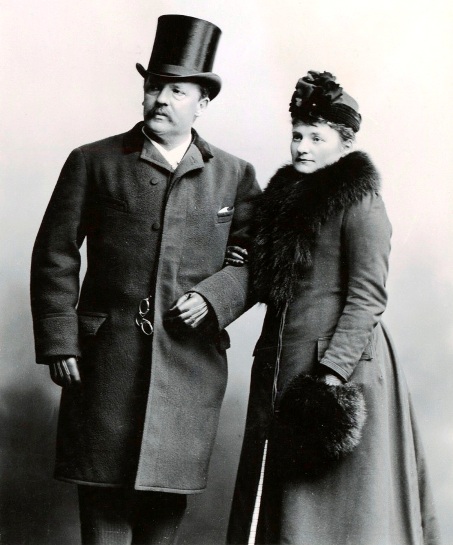
Viktor and Susen Rydberg
|
By all accounts, Rydberg
was a private person who never spoke of his personal affairs.
His personal letters therefore remain the best window in his
soul. He was a deeply spiritual man whose novels and poems have
often been described as ideally philosophical in nature, and
less kindly as "sexless". If he had homosexual tendencies, there
is no direct evidence of it, and none that he ever acted on them
with anyone, much less with his young pupil Rudolf Ström! Even
Svanberg doesn't make that ugly accusation. Those who make this
claim have strayed far from the source material. As Rydberg's
recent biographer, Judith Moffett (2001), writes:
|
|
"We can construct a story of backdoor
illicit liasons and front door respectability from these
fragments and others— Rydberg would hardly be the first, if it
were true— but he never spoke openly about his personal life at
any time, and so our best guess would still be guesswork."
|
|
Viktor Rydberg's most comprehensive biographer, Karl
Warburg, author of Viktor Rydberg: A
Biography (1900), wrote of Rydberg's
marriage:
"In his personal and public life and position,
an important change occurred towards the end of the
1870s: his engagement and marriage. The idea of
forming a home of his own had been a good dream as a
bright future for him in his youth; but conditions had
not allowed him to realize it. Now that he was at the
height of maturity and approaching the half-century
mark, it came to pass when he was engaged in October of
1878 and married on March 14, 1879 to Susen Emilia
Hasselblad, daughter of the wholesaler Fritz V.
Hasselblad and his wife, Susen Kjellberg, in Gothenburg.
Viktor Rydberg's wife had an eye for the importance of
providing him with peace to work, and did what she could
to remove disruptions and obstacles. She took on the
burdens of the practical duties, adapting the poet
and thinker to domestic life as much as possible. His
female companion during these years was certainly an
essential part of the harmonious mood which so favorably
marked Rydberg's last days, and in these
conditions, Rydberg produced rich work during his last
fifteen years— in calm and quiet. With all fervor he
called her 'his very best friend on earth' and 'his
other self in all things good'. With feminine sacrifice,
she gave everything to his work and lived only to meet
his needs."
S. E. Hedlund also wrote well of her: "What pleases and
warms my heart to think of the tranquil harbor, in which my
friend was allowed to rest his joys under the care of his
faithful companion."
Rydberg himself, in a letter to his sister Hedda Clark,
writes about his living conditions the year after his
marriage in January 1880:
"I am a sluggish letter writer, because I have to
sit at the desk so much, and even during my free time, it is
difficult for me to turn off the thoughts that then occupy
me; ...Although I am not able, but must work and exert
myself to acquire my bread, I am happy, because I have been
able to follow my inner calling, which is one of the
greatest benefits that can befall a man, and because I have
the most cordial, nicest and in every respect the best
little wife imaginable. We have a neat home, one that suits
a writer, in a beautiful neighborhood of the city.
My wife's parents and siblings with their family members
constitute a lovable circle of friendship, which I enjoy and
who show the greatest affection for me. My old society with
the Hedlund family is as intimate as it always has been, and
I have so far gained respect and kindness even in the most
extensive circles with which I come into contact, and my
writing business has gained recognition nationally in my
country. All of this means that I should feel grateful for
the higher powers that govern our lives. My gratitude also
includes you, dear, little sister, who was my benevolent
angel during the difficult days of my youth."
|
|
With this in mind, let us return to where the rumor started. As
you read, note the author's suggestive tone and his use of
overt innuendos throughout the text:
|
|
|
|
|
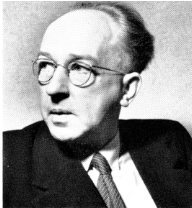
1928 Victor Svanberg
Associate Professor, Uppsala University
Novantiken i Den Siste Atenaren,
p. 24
Translated from Swedish
|
|
|
|
|
|
In 1855,
Rydberg came to his position in the Handelstidning newspaper from a
Captain Ström at Senäte near Kinnekulle, where he was tutor to a
son in the house. In the following years, a series of letters
were exchanged between him and his former teacher, that over all
are the most important documents for Rydberg’s biography of this
time. The letters were only been accessible to me in copies,
preserved in the great collection of Rydbergiana in the Royal
Library. In the copying, certain omissions have been made and
indicated. The letters printed in Haverman’s edition are in the
most extremely edited condition.[1]
On Sept. 2nd, 1855, Rydberg responds to a letter that has not been
preserved (or copied). The older friend requites the boy’s
declaration that he often thought of his 'Yberg':
“— — as far as I remember, [has] no day gone past that I haven’t thought
of you. Perhaps our thoughts have met halfway and embraced one
another as heartily as I shall embrace you when next I meet you.
“— — wonder, if you exercise much, if you can still swim.”
“If you know, how I long to see your small, dear face. Many times
have I attempted to draw your portrait on paper from memory
without success.” He sends Rudolf 2 rdr[2]
to photograph himself and send him a picture. “I shall hang it
over my bed, give it a look every morning when I wake and keep
it until you become a grown man in order to show you how you
look as a boy.
"— — My kind Uda! You may not have been in Stockholm a week,
before you fulfilled my prayer! I have reckoned that before
September 20th I can have your picture on my wall; if it takes
longer than that I shall send a reproachful thought to your room
in Stockholm every night that shall haunt you and not give you
peace until that happens.”
Rydberg sends assurances of his “warm, never dying love.” He
says that he enjoys his new work, but not his new city. He
speaks of Rudolf’s future and returns from this to his appeal to
exercise diligently:
“Through this, one becomes healthy, strong, and supple in body
and mind. When I see you again, I will find you healthy and as
prosperous as a young rose…”[3]
During the summer of 1856, Rydberg expects a visit from the
Ströms. For this reason, Rudolf writes on November 11th, 1856:
“for every day that someone came, I imagined, before I received
word who it was, that it was Mr. Rydberg.”
He (Rudolf) has been upbraided for writing so rarely — Rydberg
believes himself neglected for new school-comrades — and he
declares now that he shall write every month and that he will
not neglect his friend:
“How could my devout friend ever believe that I could forget
Yberg, no never, never could I do that; and I have no friends
yet and likely will not ever have a real and true friend.”
In the response letter dated January 18th 1857 (Rudolf’s
letter has been lost), Rydberg takes notice of the promise of
more frequent letters:
“I shall hold you to this promise, but will, in order that it
may not become heavy and burdensome, gladly be satisfied with a
few lines every time. You have no one else to write, so write
only how you feel and your dear name there under. I save every
letter from you as a memento.” “Your portrait, which
hangs on the wall by my work-table, I consider most often during
free hours and recognize with joy every feature in your face;
even the look in your eyes has not changed. You are still my
Rudolf.”
“ — — your water-color was very nice. I keep it in a box beside
two other small pictures you drew, the one a genre-piece,
representing how you toiled in the life-belt, while I stood in
the boat before the life-belt-pole, the other a landscape— or
more correctly a seascape with forest-covered islands and the
moon.”
The following summer Rydberg thought to make a journey on foot in
Västergötland with a friend:
“since I intend to separate from them and continue the journey
on my own, in order to meet a certain little friend that I keep
more by than some other. “— — While I now write, I have your
[portrait] lying before me. But it is not the same as seeing you
in person, and I really long to hug you vigorously in my
armsonce again. I think of you daily, my best friend Uda! And do
with this letter what you said you did with my previous one.”
The last request refers to the following passage in Rudolf’s
letter: “So many times I have given Mr. Rydberg’s letter a
devout Spormosa” It is evidently a paraphrase for kiss, and
Rydberg has used a paraphrase of the paraphrase.
In a P.S., he says that he dwells upon a novel. It is
“The Freebooter on the Baltic” in which he indicates his
infatuation for a “meagerly grown boy”. On August 1st, 1857,
when Rudolf Ström receives the book and thanks him for it, he
writes that he recognizes part of its contents: In many places,
I recognize the stories Rydberg tells me of the witch-trails.”
The relations of the two friends must actually have been very
intimate. By the side of a tutor’s ordinary duties has Rydberg
taken time to give his little friend swimming lessons but also
to teach him part of his cultural history studies, hardly
suitable for a child.
In the same letter, Rydberg is invited to the Ström’s
new property, Bleckenstad in Östergotland. The boy wanted to
make the invitation as tempting as possible: “Pappa himself
(!) builds the residence-house here at home, and there it is so
furnished that Yberg can come and stay in the room beside me — —
I hope and wish so much to get to see my Yberg at Bleckenstad.”
In an undated letter, responding to one of August 15th 1857,
Rudolf explains excitedly: “I weep with joy to have such a
friend, the only one whose friendship I could previously
acquire.” One year later on August 8th 1858, Rydberg has
experiences from Norway to relate. What he has to say there
about the connection between his love and his feelings for
nature is confirmed by his contemporary poetry:[4]
“From Dovre mountain we climbed down into Romsdale. Oh, my
Uda, there you should walk by my side. — — — During the journey,
as on others, I often thought of you: a beautiful regions meet
the walker’s eyes, leading his thoughts back to a friend with
which he should want to try to live in that place.”
In the next letter, he renews the association between journeys
to beautiful regions and the friend: It is now a question of
Greece, where the poet, near the end of the year 1858, tarries
in imagination during his work on The Last Athenian, which he
mentions in the letter:
“I have big travel-plans for myself and have thought of nothing
less than a journey to Italy and Greece. But I may well put off
the journey until 1860, if I am alive then. In 1859, instead, I
shall travel to Rudolf Ström who competes with Italy and Greece
for my favor, and the first thing I shall do is take him in my
arms and the second — no the third, to drink a brorskål[5]
with him, because now he is no longer the little stripling whose
hair I could pull and spank, if I chose, but a young man that
unpunished nobody dares to be at loggerheads.”
One takes note that Rydberg has as before evaded to speak about
the kiss — but that he covets it, firmly saying to himself that
the boy has become a man. The letter concludes: “Now ten
thousand hugs and farewells”, and under his signature adds: “If
you do not write immediately, I shall haunt you in your dreams
(December 20th 1858)."
Rydberg has no difficulty intertwining that in his
love-explanations in the same manner braided into his subsequent
idealistic interest: the sharp-shooter’s movement. The Autumn
1859, when he was occupied with his brochure about a
popular-arming, based on sports-exercise in schools, he writes
to Rudolf Ström, expecting interest of him for the voluntary
marksman-movement:
“Our friendship-connection, so delightful for me and dear also
to you, could then also bear a fruit for others.”
In feeling of that the union of minds now approached its
conclusion, since its object ceased to be a child, in the same
letter he gives a melancholy look back on their old life
together:
“I still recall the time at Senäte when I working on
an astronomy problem, drew differentials and integrals and
constantly looked up my logarithmic tables, scarcely allowing
myself a night’s rest, before I solved it. But still gladly
taking time with the picture of my little slender dark-haired
boy, whose countenance the photograph you sent me, preserved and
I often looked at with a feeling of sadness. Why it should be
with one such feeling, I will not seek to investigate; I do not
want to have the whole time when we were together, again, but an
hour of the time I want to relive and have you by my side,
precisely as you were then, a little pale, skinny, but in my
opinion, a very beautiful boy. It was something in your face
that occupied me; I think about it now, moreover with the
child-expression with which it was devoutly united, was entirely
gone, when I saw you again.” (November 29th, 1859).
The letter concludes with the usual wish about a substitute
in the world of dreams for a meeting which could not happen in
the real world: “I now go to bed, perhaps to dream of you.”
|
|
|
Footnotes:
[1] [Svanberg’s footnote] Brev
II, s. 3 ff.
[2] “rdr” is short for the
former currency in Sweden, riksdaler.
[3] [Svanberg’s footnote] An
omission is indicated in the transcript.
[4] [Svanberg’s footnote:] See
“Rydberg’s Singoalla, a Study” p. 78.
[5] Brorskål,
literally “brothers’ cheers”, a drink to seal a formal bond
of friendship.
|
|
I will point out once more: the copied letters in the Royal
Library have not been censored. All the affectionate phrases
were faithfully reproduced by Rydberg's wife. In thier original
context, her husband's words are best read as signs of great affection
for the young student he had tutored and not as an erotic
expression. Susen Rydberg, of course, was aware of the
connotations of words and did not see fit to censor the
letters. Likewise, Rudolf Ström shared the letters with his
wife, and preserved them faithfully until his own death. The
evidence simply does not support the conclusion that Rydberg was
a homosexual or a pedophile. Svanberg, who created a sensation
with the accusation on the centennial of the author's birth,
appears to have seen what he wanted to in Rydberg's work. His
was a deeply personal reading. In "Strindberg and Genre" (1991),
Michael Robinson writes:
"Victor Svanberg (1896-1985) was a literary critic who
became a professor at the provincial university of Uppsala.
Some people — he himself at least — considered him daring
and radical because he stated openly that the great liberal
Swedish nineteenth-century writer Viktor Rydberg (1825-1895)
was homosexual and loved boys."
Svanberg was the first to highlight what he saw as the
underlying personal motives for Rydberg's interest in the
antiquities. According to Greger Eman, who earned degrees in
social anthropology and literature, Svanberg's motive for
highlighting Rydberg's sexuality "was based in both a general
political and sexual radicalism' with the hope that "his book
would serve as a blow to the culturally conservative
establishment". Eman concludes:
"He did so on the 100th anniversary of Rydberg's birth, a
poorly-chosen occasion, as the audience expected praises and
honorary memorials. At that time, Viktor Rydberg's name was
more acclaimed than before or since. He was not just a role
model for youth, but came to represent the whole of
Swedish literture in the 1800s from Romanticism through
Liberalism's efforts to enlighten to a foreshadowing of 20th
century expressionist painting. Against this
background, it may not be considered strange, that a few
years earlier Svanberg was forced by his supervisor,
Professor Blanck, to omit a chapter in his dissertation
where he discussed the 'homosexual' relationship between the
knights Erland and Sorgbarn (in Rydberg's masterwork
Singoalla). Blanck refused to contribute to making 'the
noble Swedish idealist' look like Oscar Wilde."*
*Svanberg,
Victor. Leva för att leva. Memoarer, Stockholm, 1970,
p. 50.
According to modern literary theory, Svanberg's personal
interpretion of the letters' contents can be explained in that
he, as a researcher, unconsciously applied his own opinions and
experiences to the text. As Professor Sjöberg points out, Greger
Eman, himself a leader in the LGBTQ movement, indirectly
admitted as much, when he said:
"In his memoirs, Leva för att leva (1970), Svanberg
admitted his own attraction to men. It is likely that,
thanks to his own homosexuality, he was well positioned to
do what would today be called a queer reading of Rydberg's
half-queer visions and the many aesthetic descriptions of
the
athletic
male
body."
To make his
case, Svanberg, isolated passages in a series of friendly
letters between the sickly adolescent and his former tutor,
citing them as the basis for his theory of a same-sex attraction
between Rydberg (then 27) and teenager Rudolf Ström. In the
letters, Rydberg expresses great concern for the boy's
well-being and health, encouraging him to get outdoors and
exercise, as they had once done together. He also requests a
picture of the boy, and praises his artistic talent. In
response, Rudolf laments that he has no other friends because of
his poor health, and longs for Rydberg, now a rising cultural
figure, to visit him. Considering Rydberg's own tragic childhood
and his repeated bouts of ill-health and depression, it seems
more likely that Rydberg saw himself in this young man, feeling
the need to befriend and encourage the boy in a way that no one
had done for him at that age. Rather than a same-sex attraction,
Rydberg more likely felt deep sympathy for this young man's
plight, having overcome similar hardships in his own life.
Notably, when Rydberg first received the offer from Sven
Hedlund to work for the newspaper in Gothenburg where he
would remain employed for many years, Rudolf's father,
Captain Ström offered to extend his position as tutor for
another year, causing Viktor Rydberg to write his brother
Carl, a teacher who had recommended him to the Ströms,
asking for advice in a letter dated February 2, 1855:
|
"When I showed the letter to Captain Ström and asked him
what he thought, what I should do, he explained that if
I wanted to remain as a tutor for Rudolf, I could
definitely expect to accompany Rudolf to Stockholm next
September, where we would live with the
expedition-secretary[1]
Hellman, and I would receive room and board for my
supervision of Rudolf's studies. Thus Providence has now
opened two prospects for me, when just before I thought
I had none. But in this dilemma, what I shall decide on,
I do not yet know, and I now want to claim your
brotherly friendship for good advice. Before that, I
cannot write to Master Hedlund, but ask you to convey my
cordial greetings and thanks for his offer.
"Much speaks both for and against one and the other of
the proposals. I have become very attached to Captain
Ström's family and to my little pupil, who is an
unusually kind boy; his studies could possibly suffer if
he had to change tutors at this particular juncture. But
if, on the other hand, I have the indisputable advantage
of changing places, this apprehension must give way,
because a poor chap such as myself must seize the
opportunity in flight—; otherwise it might never be
offered again."
[1]
expeditionssekreterare:
"expedition-secretary", until the end of 1878,
a designation for the second highest official in the State
Department.
|
See also:
The 'Outing' of Viktor Rydberg
|
|
|
